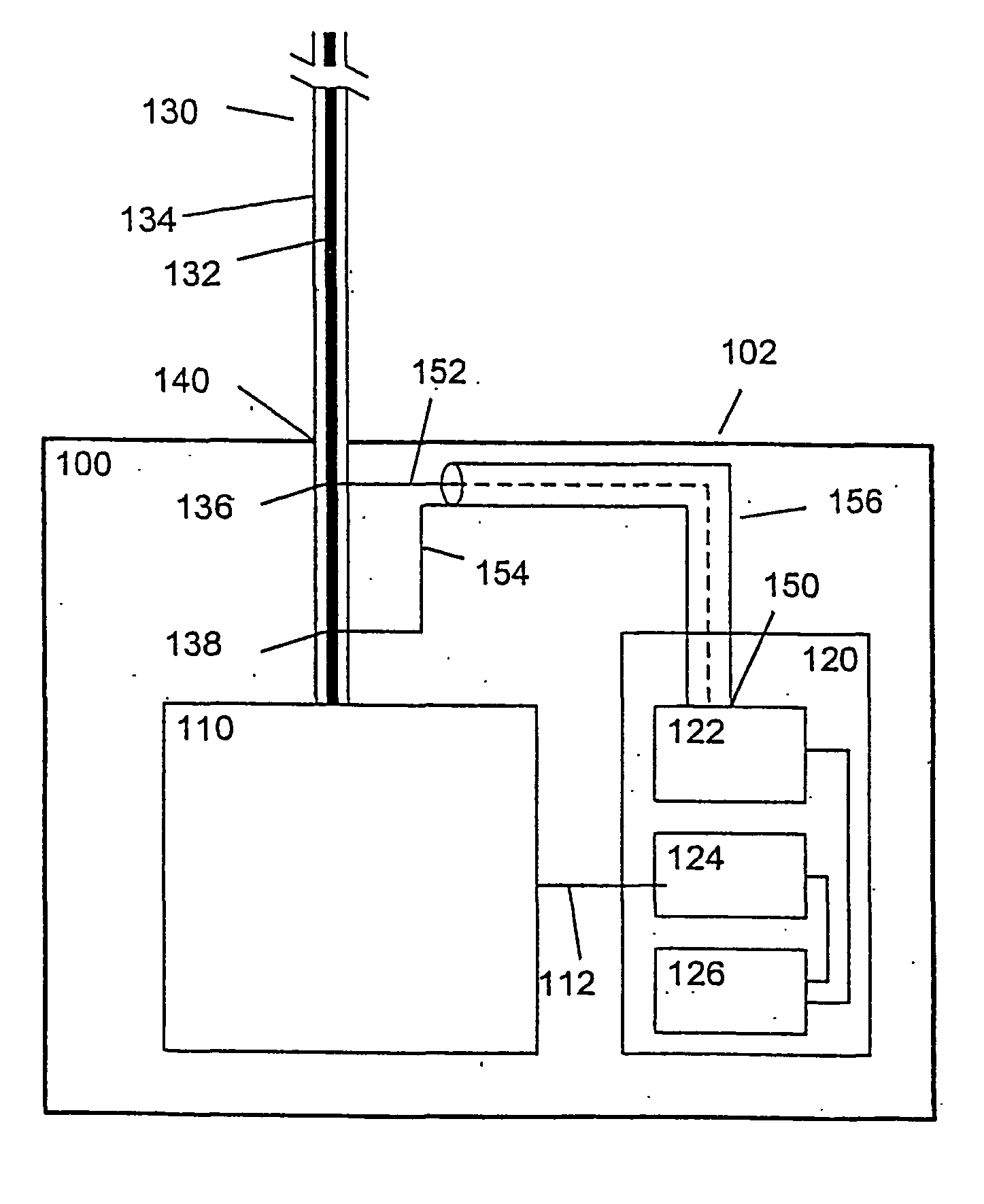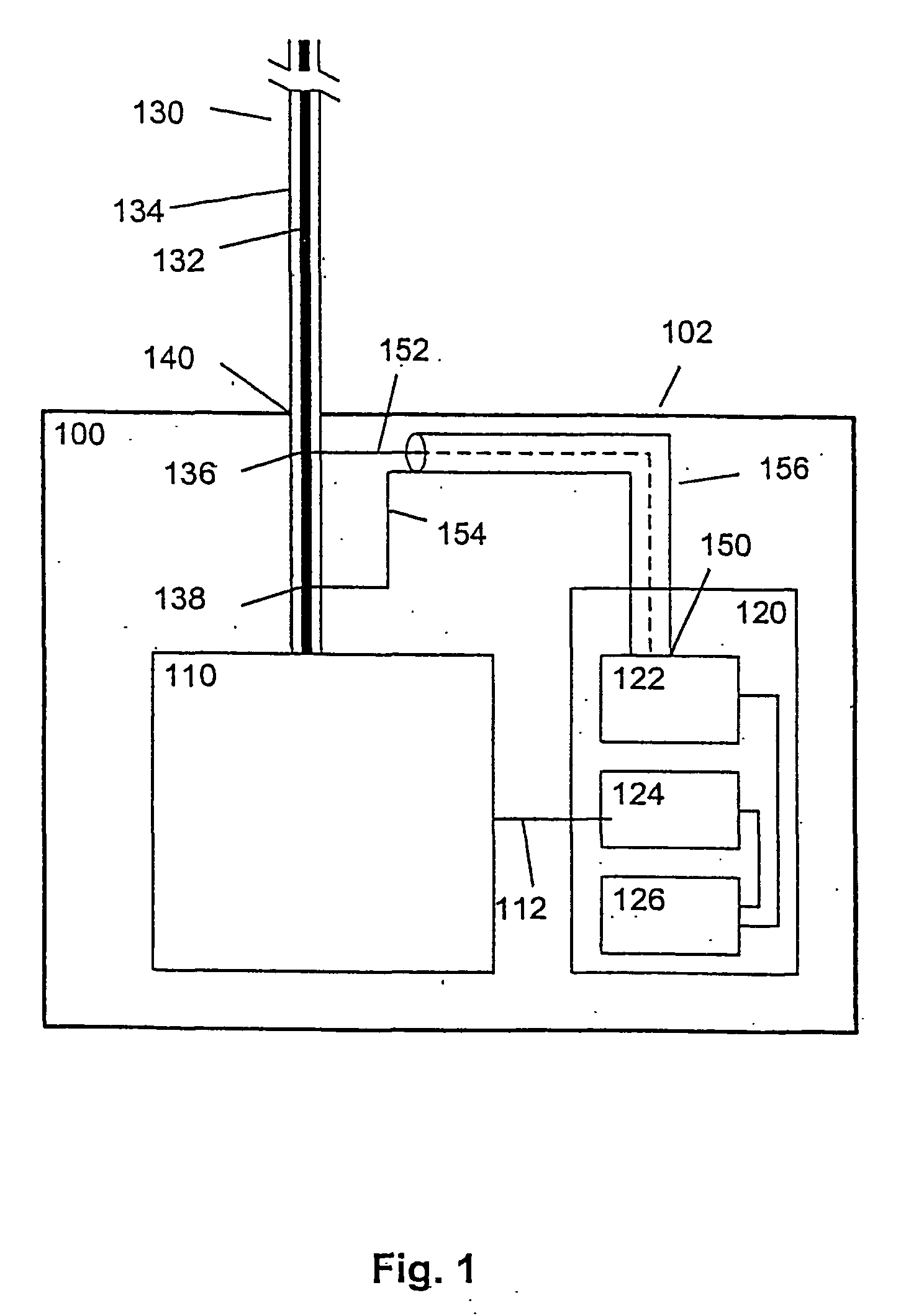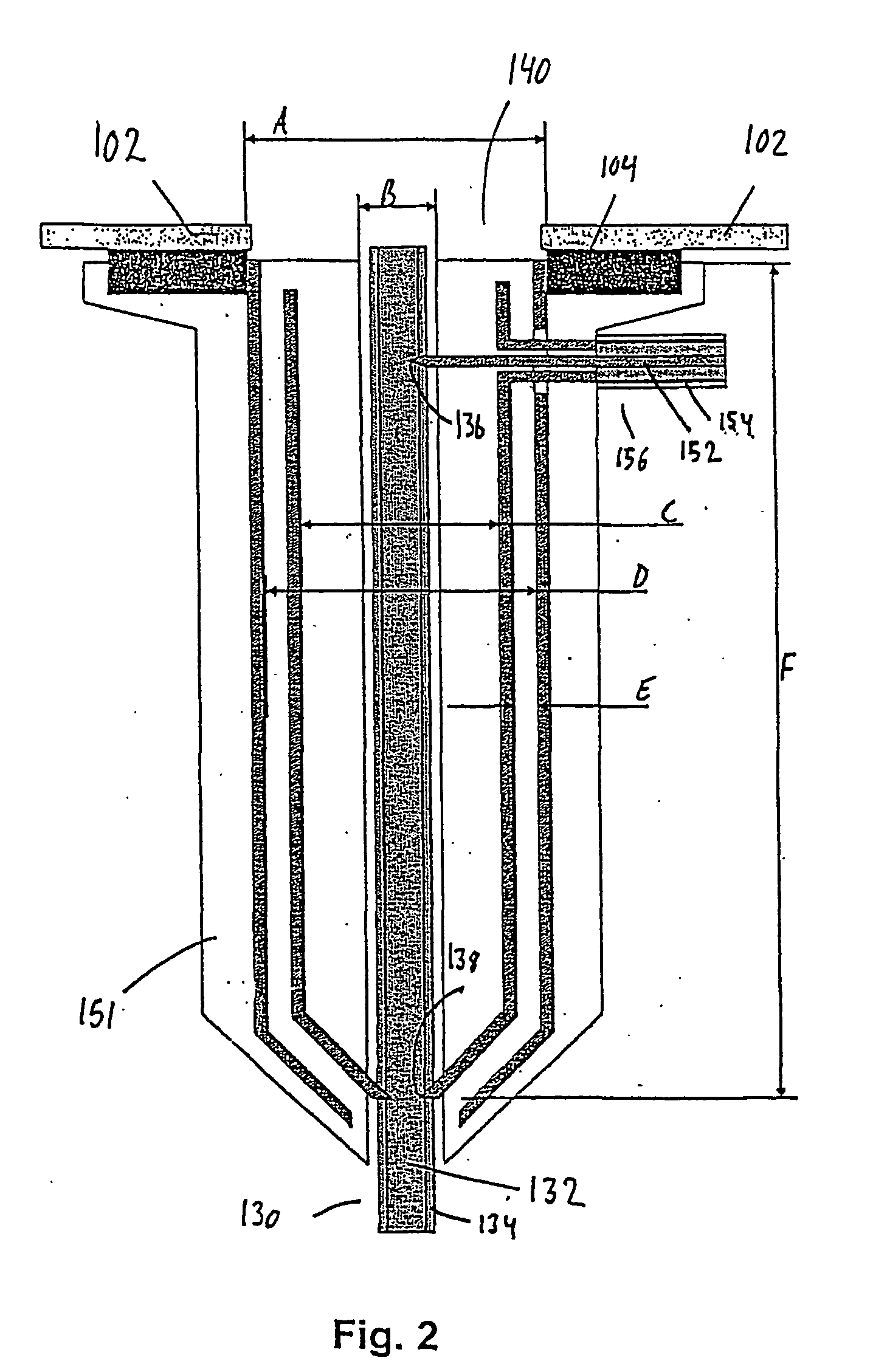Antenna device
- Summary
- Abstract
- Description
- Claims
- Application Information
AI Technical Summary
Benefits of technology
Problems solved by technology
Method used
Image
Examples
first embodiment
[0024]FIG. 1 illustrates system components in an installation cabinet in which is included an antenna device according to the invention.
[0025] An installation cabinet 100, such as a fuse box, is composed of a metallic housing, where a number of alternating current supply lines are passed in and out through openings in the cabinet. A line of this kind is indicated by 130. The line 130 is schematically indicated as a single conductor with a conducting core 132 surrounded by an insulation layer 134. In practice the line may be composed of a phase conductor in a multi-conductor cable, such as a cable with two phase conductors and an earth conductor.
[0026] Inside the cabinet 100 the line 130 is passed inter alia to a supply meter 110, which may, e.g., be of a type which measures accumulated energy consumption based on the current supplied through the supply line, and which displays these data as a series of numbers.
[0027] The supply meter is provided with a remote reading device 120. T...
second embodiment
[0038]FIG. 3 illustrates system components in an installation cabinet in which is included an antenna device according to the invention.
[0039] In this embodiment too, the antenna device comprises a signal connection of the antenna output 150 to a section of the supply line inside the installation cabinet 100. In this case, however, the signal connection is a capacitive coupling. This is achieved by the antenna device comprising a first capacitive coupling element 137 for capacitive connection of the first 152 conductor to the section of the supply line and a second capacitive coupling element 139 for capacitive connection of the second conductor 154 to the chassis potential of the installation cabinet 100.
[0040] The capacitive coupling elements may be implemented by means of metallic tape. The first capacitive coupling element may be a metallic tape that envelops the supply line, while the second capacitive coupling element may be a metallic tape arranged in against the wall of the...
third embodiment
[0041]FIG. 4 illustrates system components in an installation cabinet in which is included an antenna device according to the invention.
[0042] In this embodiment too, the antenna device comprises a signal connection of the antenna output 150 to a section of the supply line inside the installation cabinet 100.
[0043] In this case, however, at least a first 230 and a second 330 supply line are passed through openings in the installation cabinet. The signal connection is capacitive, as in the embodiment in FIG. 3. However, this is achieved here by the antenna device comprising [0044] a first capacitive coupling element 237 for capacitive connection of the first conductor 152 to a section of the first supply line 230 inside the installation cabinet 100, [0045] a second capacitive coupling element 337 for capacitive connection of the second conductor 154 to a section of the second supply line 330 inside the installation cabinet 100, and [0046] a third capacitive coupling element 239 for ...
PUM
 Login to View More
Login to View More Abstract
Description
Claims
Application Information
 Login to View More
Login to View More - R&D
- Intellectual Property
- Life Sciences
- Materials
- Tech Scout
- Unparalleled Data Quality
- Higher Quality Content
- 60% Fewer Hallucinations
Browse by: Latest US Patents, China's latest patents, Technical Efficacy Thesaurus, Application Domain, Technology Topic, Popular Technical Reports.
© 2025 PatSnap. All rights reserved.Legal|Privacy policy|Modern Slavery Act Transparency Statement|Sitemap|About US| Contact US: help@patsnap.com



